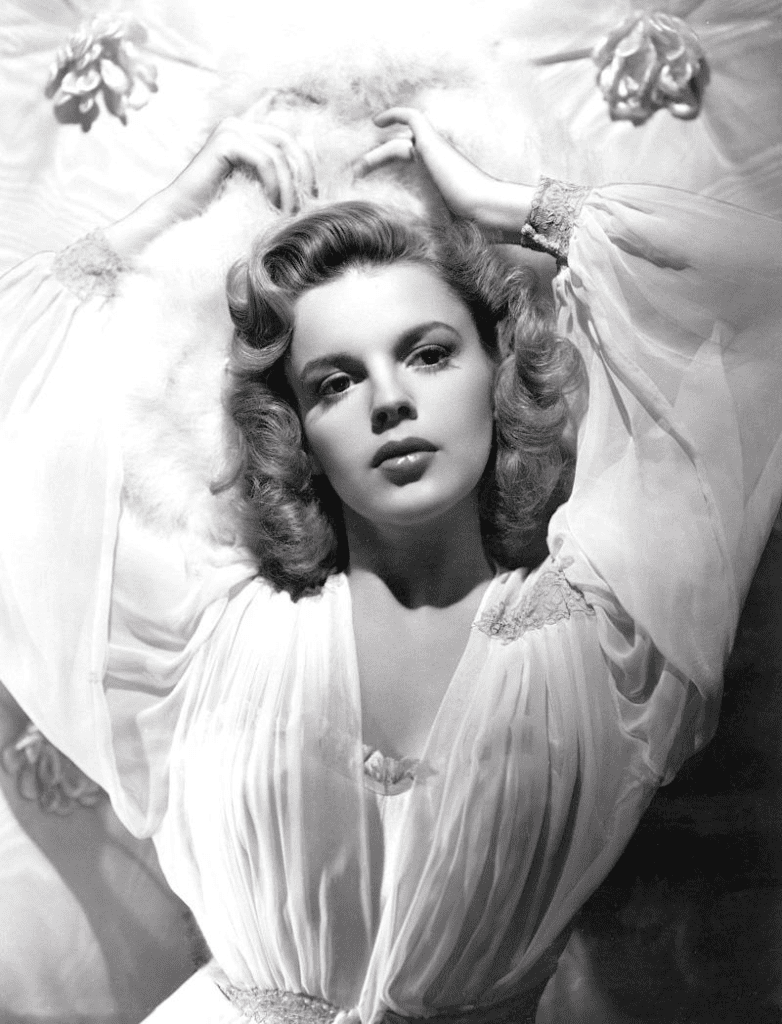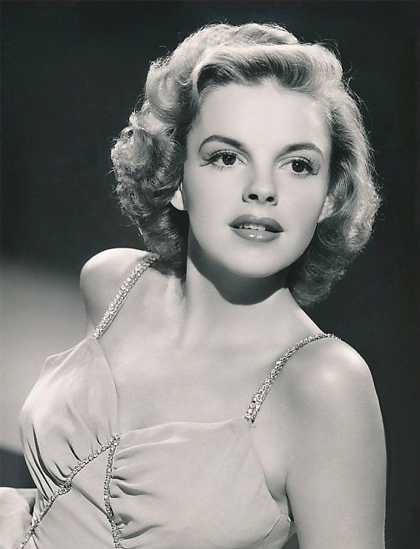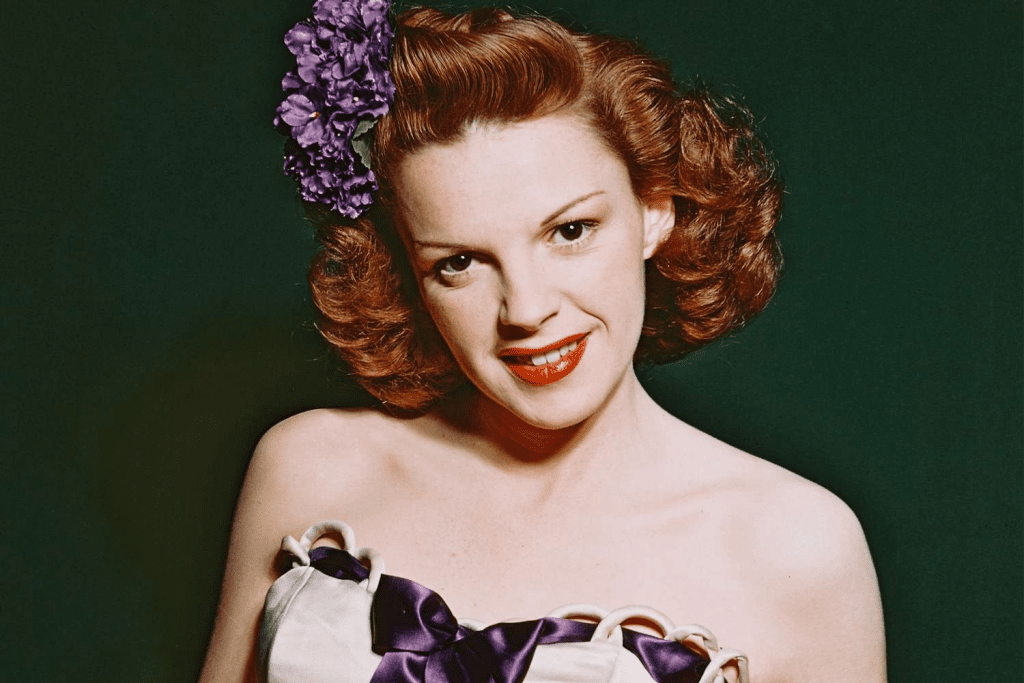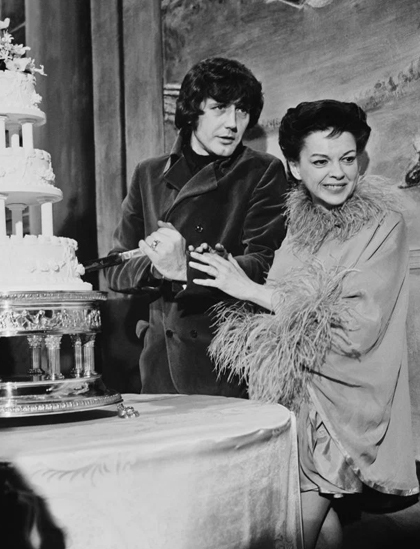Judy Garland, a name synonymous with unparalleled talent and undeniable beauty, left an indelible mark on Hollywood and the hearts of audiences worldwide. From her early beginnings as a child performer to her meteoric rise to stardom and eventual struggles, Garland’s life was a poignant tale of triumphs overshadowed by personal tragedies. Her story remains a cautionary yet inspiring reminder of the complexities behind fame.

A Star is Born: Early Life and Entry into Show Business
Born Frances Ethel Gumm on June 10, 1922, in Grand Rapids, Minnesota, Judy Garland grew up in a family immersed in show business. Her parents owned a small theater, which exposed Garland and her two older sisters to the world of performance at an early age. The trio performed as “The Gumm Sisters,” singing and dancing across local stages, planting the seeds for Garland’s future stardom.
However, Garland’s childhood was far from idyllic. Her family faced financial struggles, and her father, Frank Gumm, was rumored to have engaged in controversial relationships, forcing the family to relocate to California. Amidst the chaos, Garland’s mother, Ethel, pushed her daughters into the entertainment industry, subjecting Judy to grueling schedules and pressure to succeed.
At just 13 years old, Garland signed a contract with Metro-Goldwyn-Mayer (MGM), one of the most prestigious film studios of the era. Her powerful voice, charismatic presence, and boundless energy set her apart, but this early success came at a cost.
The Rise of an Icon: ‘The Wizard of Oz’ and Hollywood Fame
Garland’s breakout role as Dorothy in The Wizard of Oz (1939) cemented her status as an international star. Her rendition of “Over the Rainbow” became one of the most iconic songs in film history, showcasing her ability to convey deep emotion through her voice.
Yet behind the scenes, the pressures of fame took a toll. MGM executives placed Garland on a strict diet to maintain her youthful appearance, frequently subjecting her to criticism about her weight and appearance. To meet the demands of grueling filming schedules, studio handlers introduced her to amphetamines to keep her energized during the day and sleeping pills to ensure she rested at night. This cycle of dependency on stimulants and sedatives would haunt Garland for the rest of her life.
Despite these challenges, Garland continued to shine, delivering unforgettable performances in films like Meet Me in St. Louis (1944) and Easter Parade (1948). Her ability to balance vulnerability with charisma made her a beloved star, adored by audiences and critics alike.

Personal Struggles Behind the Curtain
While her career soared, Garland’s personal life was marked by turmoil. Her relationships were fraught with heartbreak, starting with her first marriage to musician David Rose, which ended in divorce after two years. Over the years, Garland married five times, often finding herself in abusive or unbalanced relationships.
Her second husband, director Vincente Minnelli, fathered her daughter Liza Minnelli but could not provide the stability she craved. Her third husband, Sidney Luft, was both a source of support and strain, as he managed her career but also contributed to her financial woes and personal struggles. Garland’s later marriages to Mark Herron and Mickey Deans only deepened her unhappiness, with Deans exploiting her declining health for profit.
The pressures of her career and personal life led Garland to alcohol and prescription drugs, which only exacerbated her declining mental and physical health. Her financial struggles, compounded by mismanagement and exploitation, left her in debt despite her immense success.
A Voice That Could Silence the World
Garland’s unparalleled talent as a singer and actress remained her greatest asset, even as her life unraveled. Her voice, rich with emotion and power, resonated with fans who saw her as a symbol of resilience. She transitioned from film to live performances, captivating audiences with her raw and heartfelt renditions of classic songs.
Her concerts, including her legendary performance at Carnegie Hall in 1961, were electrifying. Fans were drawn to her vulnerability and ability to turn her pain into art. These moments solidified Garland’s legacy as one of the greatest performers of all time.

The Final Years: A Life Cut Tragically Short
By the 1960s, Garland’s career was a shadow of its former glory. Struggling with addiction, financial instability, and health issues, she relied on live performances to make ends meet. Her final marriage to Mickey Deans proved to be disastrous, as he prioritized financial gain over her well-being.
On June 22, 1969, Garland passed away from a barbiturate overdose in her London home at the age of 47. While her death was officially ruled an accident, it underscored the destructive forces of fame and the exploitation she endured throughout her life.
A Lasting Legacy in Hollywood and Beyond
Despite her tragic end, Judy Garland’s influence on Hollywood and popular culture remains undeniable. She left behind an extraordinary body of work, including over two dozen films and countless musical recordings. Her daughters, Liza Minnelli and Lorna Luft, carried on her legacy, achieving success in their own right.
Garland’s story also serves as a stark reminder of the dark side of fame. The relentless pressures of Hollywood, coupled with the exploitation of young stars, highlighted the need for greater protections for performers. Her struggles paved the way for discussions about mental health and addiction in the entertainment industry.

Why Judy Garland’s Story Still Resonates
Judy Garland was more than a star—she was a symbol of humanity’s triumphs and struggles. Her life, marked by incredible highs and devastating lows, reflected the complexities of balancing fame and personal fulfillment. Through her talent, she brought joy to millions, even as she battled her own demons.
Today, Garland’s legacy endures not only through her timeless performances but also through the lessons her story teaches. She remains a beacon of inspiration for artists striving to make their mark, a reminder of the power of resilience, and a cautionary tale about the costs of unchecked ambition.
Conclusion: The Star Who Shined Brightest in the Darkest Nights
Every time we hear Judy Garland’s voice or see her radiant smile on screen, we’re reminded of her unparalleled talent and beauty. Yet her life also evokes a sense of sadness—a reflection of the immense challenges she faced in her pursuit of greatness. Judy Garland’s story is one of talent, tragedy, and an enduring legacy that continues to inspire and move generations. Her brilliance may have been cut short, but her light will forever shine in the hearts of those who love her.